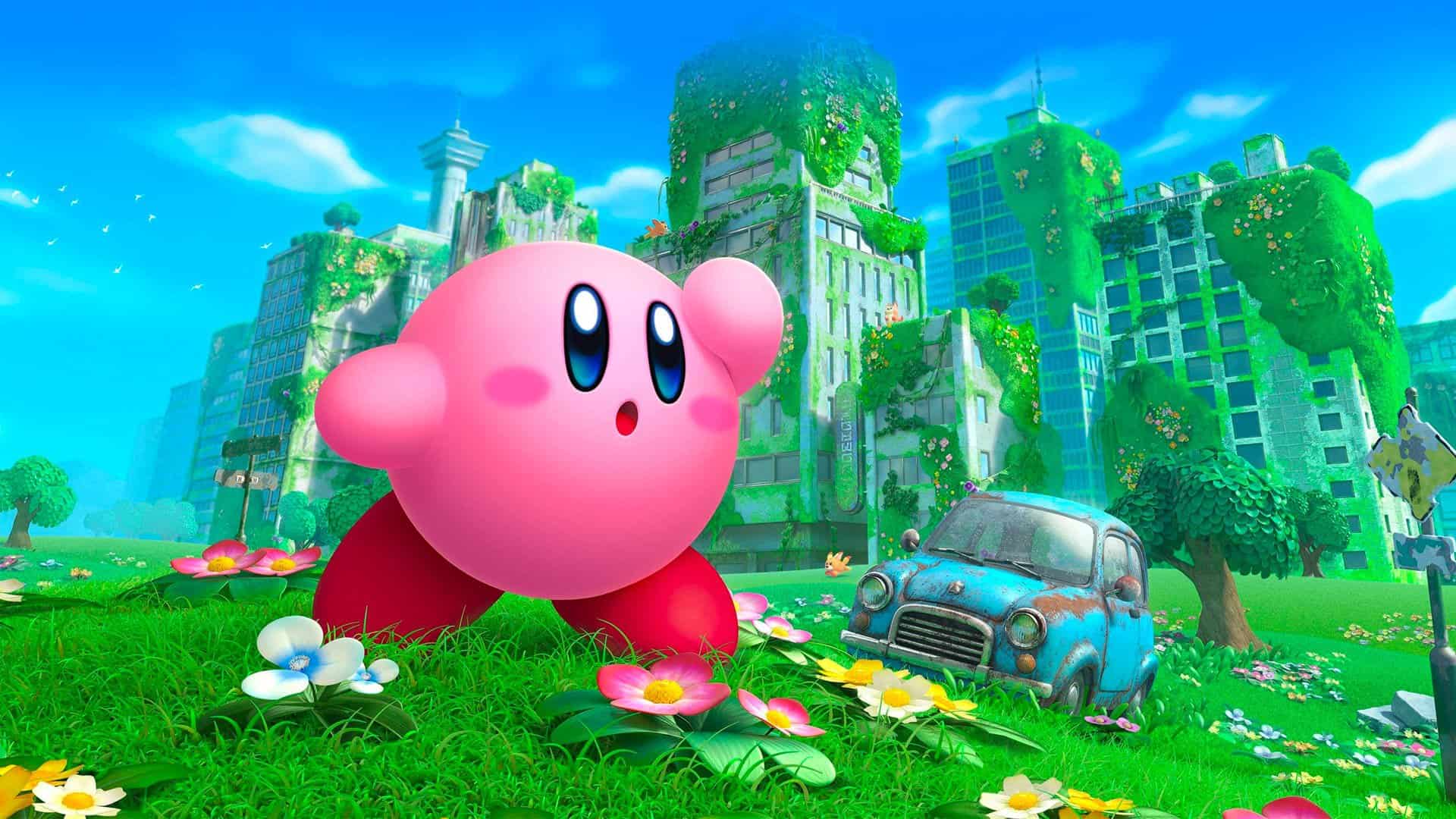Video Gamer is reader-supported. When you buy through links on our site, we may earn an affiliate commission. Prices subject to change. Learn more
What is Kirby? Does anyone know? Do we care to find out, or are we happy to accept what we see: a sphere of smiling pink, who gulps in the air and inflates, like a wad of gum who never comes unstuck. Another occasion for inquiry awaits, on March 25th, with the release of Kirby and the Forgotten Land. There is a demo available now, in which our hero, like an engorged python, swallows a vending machine, a car, and a traffic cone. Each of these bestows an ability: the vending machine spits cans from Kirby’s mouth; the car pootles and puffs, charging through obstacles; and the cone, rather than allowing him to safely divert traffic, makes an offensive weapon of his head.
The demo gives us three levels and raises another pressing question: Where is this forgotten land? It resembles Earth, with its roads and pipes; Kirby climbs up a clapped-out escalator, in a vacant shopping mall, and everything is crazed and grassy. You half expect Joel to come sidling round a corner, with a rifle primed at what he presumes is a new, candy-hued strain of cordyceps. No such dangers intrude, of course; there are foes, some resembling Corgis, others wielding swords, still others rolling bombs along the ground. All can be ingested and mimicked, and the chance to see Kirby don a low-dangling green cap and wave a sword—a squidgy link between worlds—shouldn’t be missed. But the abiding feeling of this new adventure is ease, and gentle experimentation. It’s developed by HAL Laboratory, but so hard-wearing and elasticated is its hero, and so pleasurably safe is its play that it could equally bear the name of Durex.
The obvious comparison here is to Super Mario Odyssey. That game saw its star tossing a magic hat at various objects and possessing them, and its best moment came when Mario inhabited a Tyrannosaurus rex, embellishing the beast with a moustache. It was a perfect image: gaming’s king, the old princess-rescuing dinosaur who perennially refuses to fossilise, showing a lesser creature how it’s done. Play isn’t as idea-crammed and pliable here as it was in Mario’s adventure, but nor, despite its title character, does it feel stretched thin. Kirby’s powers feel as though they were conceived with their immediate surroundings in mind. The cone, for example, will rupture a pre-cracked pipe, and Kirby will ride the resulting geyser onto a lofty ledge, for the uncovering of an optional, and obvious, secret. But there is something irresistible—something unfailing in its power to please—in the completion of a plush and comfortable task.

No sooner had I finished the demo for Kirby and the Forgotten Land than I had bought a copy of Kirby Star Allies and downloaded the SNES collection—the better to access Kirby’s Adventure, Kirby’s Dream Land 3, Kirby Super Star, and Kirby’s Dream Course. The new game is, strange to tell, the little blob’s first 3-D outing. It’s no surprise that he takes to it so naturally; of all the Nintendo characters who grew to fame on an 8-bit plain, he must have bristled the most at the confines of two dimensions. Look at him on the cover of Kirby’s Adventure, his NES debut, inhaling the edges of the world, as if it were a crumpling poster, and exposing the dark and starry depths beneath.
So, why the sudden compulsion for all things expansively pink? And why should this upcoming vision, of Kirby bobbing through a recognisably ruined world, be so enticing? One reason is that it shares with Super Mario Odyssey the frisson of seeing a cartoon rub shoulders with something that abuts reality. The weird sight of Mario walking the streets of New Donk City, among reasonably proportioned humans, was a sharp reminder of the joys of the unreasonable, and of the way that proportion is something out of which things can be fruitfully, and wondrously, blown. Another reason is that no work from HAL Laboratory ought to go unplayed. It’s an odd studio, in part because it defines itself by oddity. The logo, depicting a snoozing dog on a bed of hay, curled around a clutch of eggs like a misguided mother, was designed in 1998 by Shigesato Itoi, who summarised his theme as “an unexpected bond… one that brings the birth of something new.” Over two decades on, that theme is alive and well in Kirby and the Forgotten Land; indeed, I can think of no finer description of the union between Kirby and an automobile.
There is also, as is only right, the hint of something held back in the demo. If pure mechanical experimentation isn’t quite the point, then will it be excess—the sucking in of scenery and spectacle, to swell our sense of fun? This seems likely, as the last level of the demo has us battling a screen-hogging gorilla, with Kirby exhaling a plume of polar frost at its feet. And what of the Waddle Dees, the mouthless fuzzballs, with rubbery yellow feet and rouged cheeks, whom Kirby must rescue from floating cages? Apparently, it will fall to us to build a small town to house them. Why the hell not? So far, Kirby and the Forgotten Land may not bring the birth of something truly new, but I have found myself succumbing to an unexpected bond.

